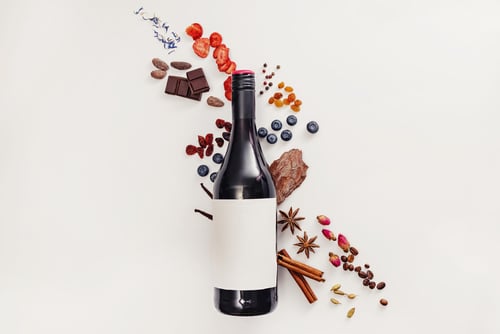Some people drink wine because it’s the thing to do or they like the taste or the occasion of it. While other people have a deep appreciation for every aspect of wine, from the region the grapes are grown to every element found in a good bottle of wine.
Does your wine knowledge stretch to the tannins?
Tannins are a signature feature of wine because they provide the story of taste, and understanding tannins can help increase your knowledge and appreciation of wine.
You don’t have to be a Master Sommelier to gain a deeper understanding of the intriguing complexities of fine wine; an avid interest will suffice.
Tannins are an important element to know when it comes to wine tasting and enjoying. All of the elements found in wine provide a story to the drinker, but to be able to hear it, you must first understand the language.
What are tannins, and how do they end up in wine?
Tannins can be found in plants such as grapevines. Plants have tannins much the same as hedgehogs have spikes, making them unapproachable to others who wish to harm or eat them!
Tannins are in the bark and leaves on many plants, and in grapes, they can be found on the skin, pips, stems and the wooden barrels they’re stored in if barrel aged.
The tannins found in grapes are polyphenols which (historically) were used for tanning things, hence the name. Polyphenols can have health benefits because of their antioxidant structure, even in wine, if enjoyed in moderation.
When the grapes ferment, the tannins are released into the liquid from the skins, seeds and stems. The longer the grapes are allowed to ferment, the more tantalising tannins they release.
Tannins create a stimulating sensation within the mouth, providing texture and a sense of structure to the best wines.
Recognising tannins when tasting wine
Taste and Texture
Tannins provide wine with the dry sensation you can feel upon drinking it.
Liquids aren’t generally associated with dryness; however, a wine with plenty of tannins is considered dry. Tannins can be experienced as velvety, silky, firm and astringent, and provide the mouthfeel of wine.
Try paying close attention to how the wine feels in your mouth and how it makes your mouth feel at your next wine tasting, this will help develop your palate and provide a deeper understanding of the wines you drink.
Structure and Quality
Tannins can create an immensely enjoyable wine or create a cloying wine.
It comes down to the expert hand of the winemaker and their skills to ensure the wine is balanced well with tannins, acidity, alcohol and body.
Tannins help provide structure to the wine and create a textural story; the hope is it’s one that’s enjoyable and memorable.
Age and Strength
Tannins are used as a preservative in winemaking, and wine producers will sometimes increase the amount of tannins to increase the shelf life.
Aged fine wines tend to be so coveted because they’re tannins will have softened over time, providing an incredibly smooth and enjoyable drinking experience. The same can be achieved with younger wines and allowing them to breathe; this can help dilute the tannins and also increase smoothness on the palate.

